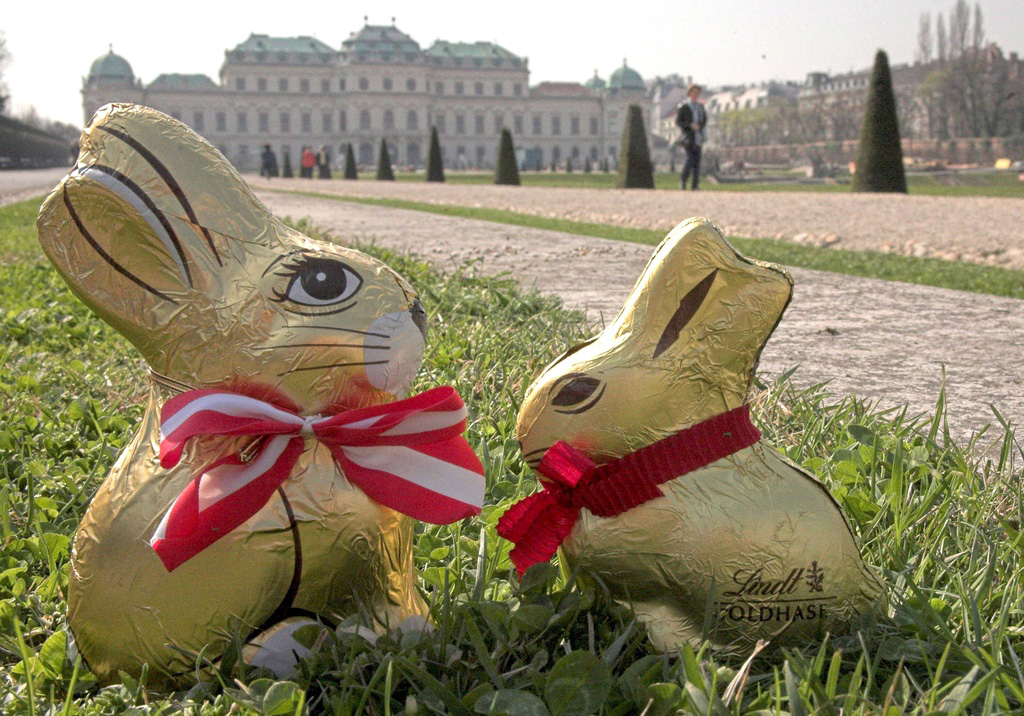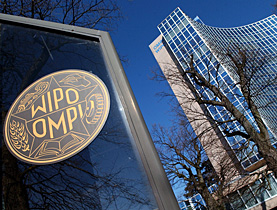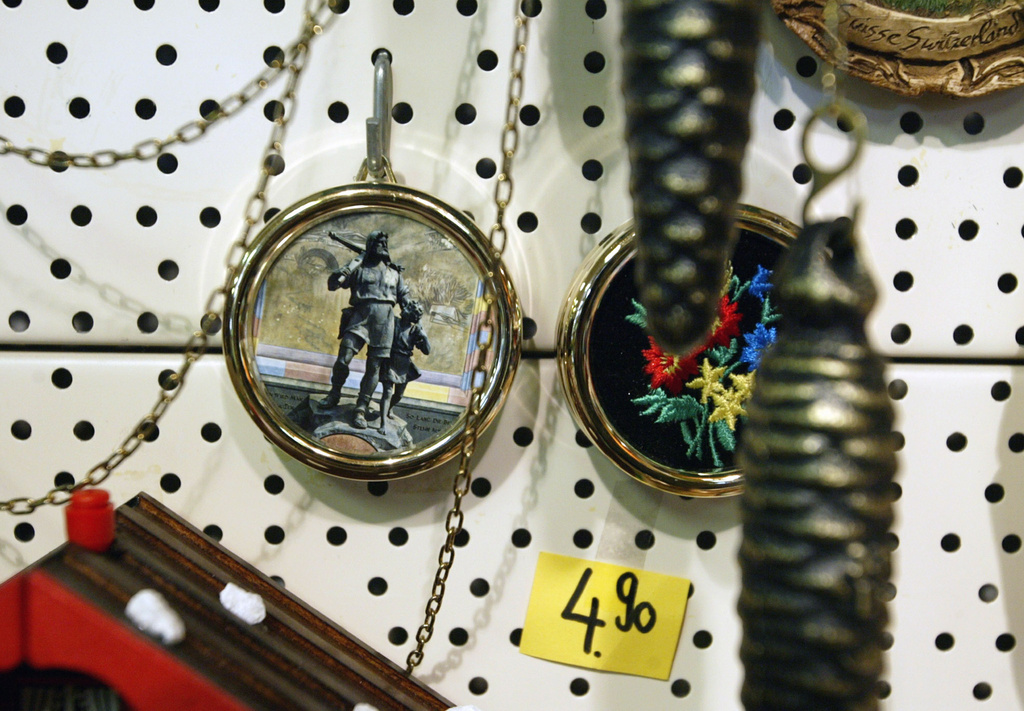Market leaders battle to protect brands

Imitation is the sincerest form of flattery but it is not always welcome, as Swiss brands Lindt & Sprüngli and Nestlé are currently demonstrating before the courts.
The companies are fighting legal battles on several fronts in an effort to keep their products exclusive.
This struggle is a common but unwanted side effect of success in a hyper-competitive market, according to brand consultant Peter Lux.
“Brand protection is a growing activity of all companies which have, or believe they have, something to protect. It is important that the owner of a trademark or patent watches out for anyone digging in their garden,” Lux told swissinfo.ch.
Earlier this week one particular bunny was kicked out of a Swiss garden. Austrian chocolate maker Hauswirth pledged to appeal against the ruling by a Vienna court that stopped it from producing Easter bunnies resembling those made by Lindt & Sprüngli.
Lindt applied for and received a trademark for its gold foil-wrapped bunny with red ribbon and bell in 2000. It then began taking action against chocolate makers who it felt were making bunnies too similar to its own.
Fair play?
In the course of a seven-year legal battle, Hauswirth has argued Lindt is using its trademark to quash competition unfairly. It argues that chocolate bunnies traditionally come wrapped in gold foil and that it is normal for the shapes to look similar as they are based on animals.
The Swiss confectioner is also involved in legal action in Germany against its competitor Riegelein, which also produces similar chocolate bunnies.
“Primarily we want to protect our brand, our special type and shape of Easter bunny,” a Lindt & Sprüngli spokesman said after the Vienna judgment. “Of course competitors can offer chocolate bunnies that are different from ours,” he added.
The Lindt cases raise interesting questions, Stefan Fraefel of the Federal Institute of Intellectual Property told swissinfo.ch.
“This form has become a trademark through use. At the starting point [in 1952] the shape of this chocolate bunny was not a trademark but because people got used to seeing the shape of the product over time they began to perceive it as a trademark,” Fraefel explained.
But a brand is about a lot more than just the look, Thomas Harder of Swiss Brand Experts told swissinfo.ch.
“In the discussion about branding, the focus is often reduced to the surface but that’s only one aspect of the brand – the entry to the essence. The chocolate inside still has to taste good,” he said.
Copy cats
Another high profile Swiss case where the judgment is still pending involves the attempted sale of rival coffee capsules which are compatible with market leading Nespresso coffee machines.
Nestlé is currently involved in a three-way legal battle against rivals which have produced cheaper capsules that can be used in Nespresso machines.
Ongoing legal action in France against United States giant Sara Lee and the Ethical Coffee Company was recently followed by two further law suits – this time in Switzerland – aimed at discount supermarket chain Denner.
Switzerland churns out more patents to protect intellectual property rights per head of capita than any other European country. Nestlé has registered 1,700 patents for its Nespresso range alone.
Nestlè was the first company to introduce a high quality espresso-style coffee capsule product to the market in 1986 – ten years after filing initial patents.
As the Nespresso brand took off, rival companies were quick to produce their own machines and pods at cheaper prices, but Nespresso continues to dominate the market based on a reputation for higher quality.
The arrival of new rival capsules that can be used in Nespresso machines threatens to more seriously challenge Nespresso’s dominance.
Peter Lux says it’s a case of everyone wanting a slice of the action. “If as a producer I don’t have an original idea, I try to produce something similar to successful competitors.
“It’s hard in the food business to come up with any innovation. You have to invest huge money and the flop rate is above 90 per cent.”
Vigilant
Companies have to be vigilant, according to Fraefel. “We are responsible for the registering of trademarks, we examine trademarks to see if they can be protected or not but it is up to the holder to defend them.”
Inadvertent transgressions are usually solved quickly between companies. “In some cases the other party may not have known that there was a trademark and they stop immediately when informed.”
Before taking legal action, the owner of the patent or trademark should notify the other party of his infringement, the intellectual property institute advises. Depending on the situation, a warning can be enough to solve the problem without legal action.
Since costs for both sides can quickly run into tens of thousands of francs, it is not uncommon for infringement cases to be settled out of court. In some cases the parties can opt for a licensing agreement.
Brands have been important and lucrative since the craft guilds of the Middle Ages and will always be jealously guarded both behind the scenes and before the courts.
A patent is a protective right granted by the federal government for a technical invention. Invention, in the legal sense, is a solution to a technical problem.
Inventions include products (for example heatable ski boots or chemical compounds such as aspirin) and processes (for example a process for freeze-drying coffee). If an invention is novel, non-obvious to a person skilled in the art and can be commercially applied it is patentable.
(Source: Federal Institute of Intellectual Property website)
Technically, a trademark is a protected sign which distinguishes the products or services of one business from another.
Basically, any graphic representations can be used as trademarks under the law: For example, words (e.g. Victorinox), combinations of letters (e.g. ABB), combinations of numbers (e.g. 501), graphic images (e.g. the Swiss Federal Railways logo), three-dimensional forms (e.g. the Mercedes star), slogans (e.g. «Cats would buy Whiskas»), any combination of these elements, and a series of tones (acoustic trademarks, e.g. the Ricola jingle).
(Source: Federal Institute of Intellectual Property website)

In compliance with the JTI standards
More: SWI swissinfo.ch certified by the Journalism Trust Initiative














You can find an overview of ongoing debates with our journalists here . Please join us!
If you want to start a conversation about a topic raised in this article or want to report factual errors, email us at english@swissinfo.ch.